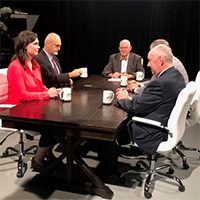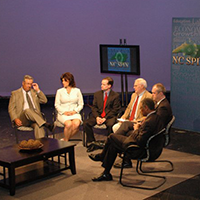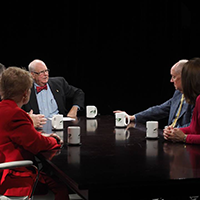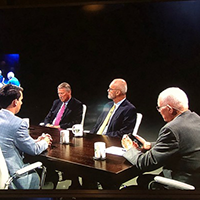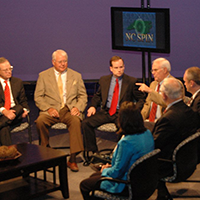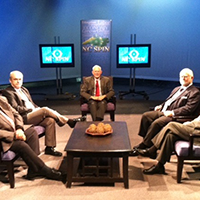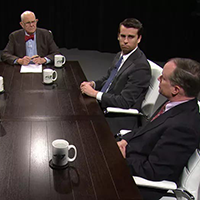How can you be sure you can trust North Carolina's elections?
Published October 24, 2024
By Tom Campbell
Pat McCrory lost his bid for a second term as governor in 2016 by just 10,000 votes, the smallest margin in modern history. He was obviously disappointed and a bit skeptical of such a small margin. But Pat did something rare. He studied North Carolina’s election systems to learn how votes are cast, recorded, supervised and counted.
McCrory determined that North Carolina elections are completely trustworthy and, with miniscule exceptions, error free. Pat is heading up the North Carolina Chapter of RightCount, a nonprofit created to educate our voters on the integrity and accuracy of our elections system.
The effort is timely. A September High Point University Poll revealed that only 36 percent of voters had confidence this election would accurately reflect the way votes were cast. 40 percent said they had some confidence and 17 percent had no confidence in North Carolina’s system of voting.
This lack of confidence is the result of some trying to cast doubts and undermine the process. We won’t attempt to explain their motives, but they are neither truthful nor patriotic. North Carolina elections are among the most trustworthy in the nation.
McCrory says three big changes have made elections more trustworthy. They include the requirement for voter picture identification, the requirement that all ballots be on paper so as to provide a paper trail. Finally, that no voting machine can connect to the Internet, thus preventing outside interference.
Let’s walk through the voting process, beginning when you request a ballot. You will be asked to provide an acceptable picture ID, as well as confirming your address. Only then will you be given a ballot and directed to a privacy booth where you fill in the circle beside each candidate’s name for whom you choose to vote.
Should you have any questions or need help there are officials, wearing badges, who can help you. But should anyone without an ID badge approach you and offer advice or assistance you should immediately contact the precinct registrar and report this.
If you make a mistake filling out your ballot, simply take it back to a registrar and tell them. They will mark your ballot as a “spoiled” and issue you a new ballot.
When you have completed you ballot, go to a tabulator machine near the exit of the polling place and insert your ballot into the tabulator. If the ballot is accepted, you will get a message acknowledging it. If you overvoted, let’s say you voted for both Trump and Harris, the tabulator it will beep and a message on the screen will alert you and give the option of spoiling that ballot and getting a new one or allowing the ballot to be counted, just not in the overvoted race.
Different counties use different brands of tabulators, but they work basically the same. Each tabulator machine is tested prior to the election to ensure it accurately codes and counts ballots. After passing the test, they are locked and sealed with tamper-evident seals. Each machine has a “unique physical equipment key to turn the equipment on and access any media port on the tabulator.” Only authorized individuals may have these keys and security codes to open voting machines.
Once the polls have closed there is a reconciliation process. The Democratic and the Republican precinct judges will lock the tabulator machine and run a tape. The tape tells how many ballots have been cast, as well as the vote totals for each candidate. They reconcile the number of ballots counted with the number issued.
Each tabulator also has a memory device and, assuming the reconciliation is correct, the judges will seal the memory device, sign it (both Republican and Democrat signatures) and transport the stick, along with the tape, to the county board of elections. The paper ballots are then sealed and stored in a secure room for up to two years.
Each county board of elections has a secure room with a secure computer or tabulator that will upload the memory device data for each precinct. The vote totals are recorded and transferred by secure file transfer protocols (ftp) to the State Board of Elections, where they are reported. There are bipartisan observers in every step of this process to ensure integrity and accuracy.
Days after the election, audits are conducted in two precincts in each county with hand-to-eye counts to ensure totals are correct. And ten days after the vote each county certifies their election outcome, as does the state.
These safeguards ensure there is no ballot stuffing, no way a person can vote more than once and no way the election can be rigged. There are bipartisan eyes on every step.
The real winners of the election are the more than 7.7 million voters of North Carolina. Thank you to all who earnestly conduct and oversee trustworthy elections.
And thank you for exercising your right to vote.
Tom Campbell is a Hall of Fame North Carolina broadcaster and columnist who has covered North Carolina public policy issues since 1965. Contact him at tomcamp@carolinabroadcasting.com

